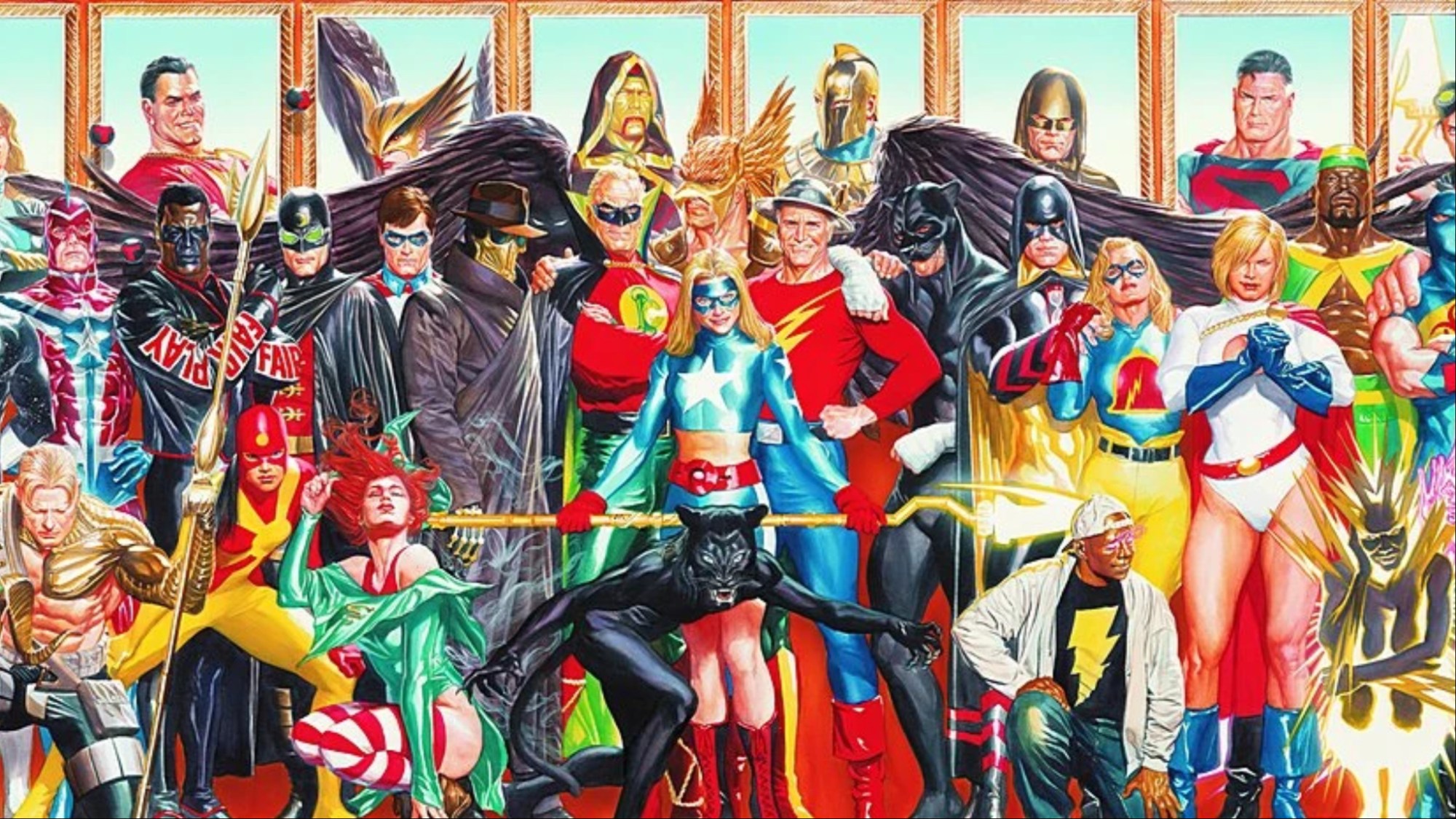The Justice Society of America set the blueprint for every superhero team that came after them, bringing together DC’s greatest heroes for adventures bigger than any one hero could handle. DC has created many amazing teams over the years, all of them based on the Justice Society’s example. The Justice Society was always the B-list team, and would fall from prominence as DC tried to clean up its cluttered continuity. The early years of the ’90s would see DC try and fail to bring the team back as a big deal, but they wouldn’t actually succeed until 1999. This led to the greatest team comics ever — the one-two punch of Robinson/Johns/Goyer’s runs on JSA/Justice Society of America. This run on these two books, which ran from 1999 to 2009, is a cut above everything that came after, with JSA becoming synonymous with quality.
JSA/Justice Society of America are the books that helped make Geoff Johns into DC’s most popular writer of the 2000s, and have a very special place in the history of DC Comics. Legacy has always been an important part of DC’s history and JSA/Justice Society of America did their best to show why DC’s Golden Age heroes, and their descendants, are some of the best heroes ever created. JSA/Justice Society of America are two team books that have never been matched.
To talk about JSA/Justice Society of America, we have to go back a little bit, to Starman. Starman, by James Robinson and Tony Harris, made ’90s readers see that DC’s Golden Age wasn’t lame, but full of brilliant characters. Starman‘s success led to DC giving the Justice Society a new chance, and that led to JSA. Robinson and writer David S. Goyer, along with Stephen Sadowski and Leonard Kirk as artists, would launch JSA, bringing together a core of surviving Golden Age heroes and their legacies. Meanwhile, Johns was writing another book that played off Golden Age legacies with Stars and S.T.R.I.P.E.S., showing that he was another student of DC history. Johns would take Robinson’s place with JSA #6 and JSA really took off.
Johns and Goyer are much more controversial writers now than they were then, both of them having some high-profile flops to their names, but their work together was brilliant. The two of them were able to use their one book to build the lives of multiple characters who were in no other books, all while giving readers exciting, action-packed stories that drew them in. Johns and Goyer used classic Justice Society villains like the Injustice Society, modern ones like Extant, and created all new ones like Johnny Sorrow. The book brought Black Adam back to prominence, giving him his most popular form as a violent anti-hero, as well as bringing Captain Marvel/Shazam to the team. Robinson, Johns, and Goyer brought Legion villain Mordru to the modern day, and told the best Mordru stories ever. JSA brought back Hawkman, cutting through all of the continuity tangles to make sense of a character nearly everyone gave up on. They gave readers the best teen heroes of the ’00s in Stargirl and Jakeem Thunder. They were able to repair all of the damage to DC’s Golden Age heroes and there was a time when JSA was the most acclaimed team book in the entire comic industry.
Stories like “Justice be Done”, “Darkness Falls”, and “Princes of Darkness” are perfect team superhero stories. They do a remarkable job of laying out their plots and building their characters perfectly, with epic moments and wonderful pacing. Goyer would leave the book after “Princes of Darkness”, with Johns taking over the book and dropping stories like “Black Reign” and “JSA/JSA”. JSA would get relaunched as Justice Society of America after Infinite Crisis, kicking off with “The Next Age”, giving fans a crossover with Justice League of America “The Lightning Saga”, and the Kingdom Come sequel “Thy Kingdom Come”. Johns’ run on the Justice Society would end with issue #26, closing out the Black Adam story had been telling through JSA and 52. For ten years, fans would know that if they picked up JSA or Justice Society of America, they were going to get superheroes at their best.
These ten years of stories haven’t been matched since. There have been some great team books, but even the best of them wishes they were half as good as JSA/Justice Society of America. They literally don’t write team books like this anymore. These are books that aren’t afraid of the weirdness of their past, able to take a group of heroes that no one had cared about in years, and make them into a bestseller. There is an entire generation of DC fans whose favorite DC characters come from these runs. The ten years of JSA/Justice Society of America took a portion of the DC that hadn’t been important in years, since Crisis on Infinite Earths at least, and made them into a vital and important part of things again. It proves that creators with passion for the characters can give readers that same passion.
DC is going through something of renaissance, with JSA returning. The current book is pretty great, following the example of the classic JSA/Justice Society of America from 1999-2009. These two books had a perfect run for an entire decade, which is something that is very rare in the modern day. It did everything right, reminding people why classic DC heroes like Jay Garrick, Alan Scott, Wildcat, and Hawkman are amazing, and giving readers new favorites like Stargirl, Jakeem Thunder, Power Girl, Black Adam, Hourman II, Jessie Quick, Cyclone, and many more.
Making people love Golden Age DC was a huge accomplishment. These two books are the reasons why fans have screamed for the Justice Society to come back every time that DC changed its continuity. They have a legacy that few other books have. Seriously, go out there and hunt down a copy of “Justice be Done” and go on from there. You will become a Justice Society fan. Not every book can do that, and it’s why no team books will ever compare to JSA/Justice Society of America.
The Justice Society of America set the blueprint for every superhero team that came after them, bringing together DC’s greatest heroes for adventures bigger than any one hero could handle. DC has created many amazing teams over the years, all of them based on the Justice Society’s example. The Justice Society was always the B-list Read More

